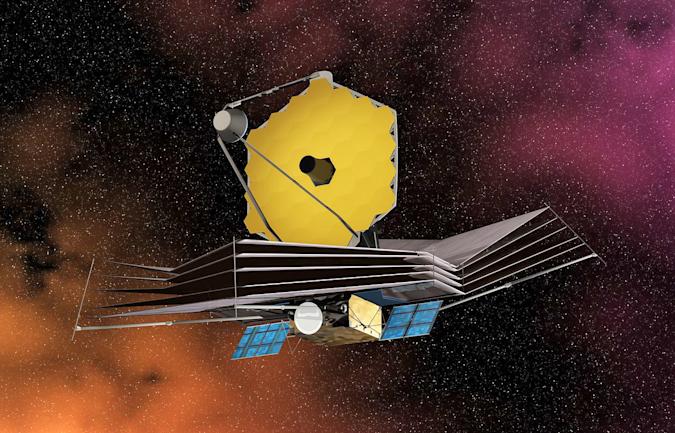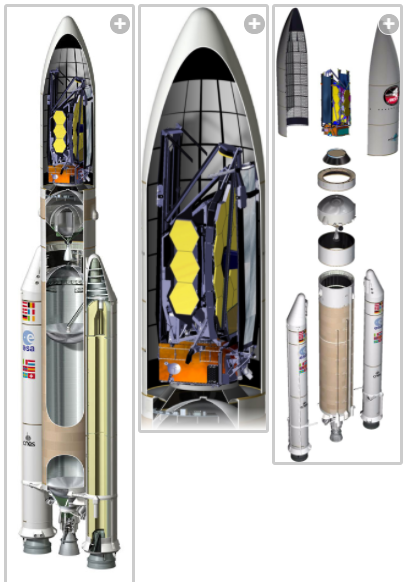
What Is the James Webb Space Telescope?
The James Webb Space Telescope is the world’s most powerful and largest space telescope. It will let scientists peek back 200 million years after the Big Bang to see how our cosmos looked. Images of some of the first galaxies ever formed will be captured by the telescope. It will also be able to peek inside dust clouds to see where new stars and planets are developing, as well as investigate the atmospheres of planets orbiting other stars. It will be able to observe objects in our solar system from Mars outward.
The Webb space telescope is the height of a three-story building and the length of a tennis court! It is so large that it must be folded origami-style to fit inside the rocket. Once in space, the telescope will unfold, sunshield first.
It Has The Ability To See Through Dust Clouds
The James Webb Space Telescope sees the universe in light that human eyes cannot perceive. Infrared radiation is the name for this type of light, which we perceive as heat. Infrared cameras are used by firefighters to see and rescue individuals through smoke in a fire. The James Webb Space Telescope will see through dust in our universe with its infrared cameras. Inside those dust clouds, stars and planets originate, thus peering inside could lead to intriguing discoveries! It will also be able to observe objects (like the early galaxies) that are so far away that their light has shifted from visible to infrared due to the expansion of the cosmos!
The cameras on the Webb telescope are sensitive to solar heat. Webb has a sunshield to protect its instruments and mirrors, similar to how you could wear a hat or visor to hide the sun from your eyes. The sunshield on the telescope is about the size of a tennis court. The difference in temperature between the telescope’s sun-facing and shaded sides is over 600 degrees Fahrenheit.
Significance of the Gold Mirrors
Mirrors capture and focus light from faraway stars, allowing space telescopes to “see.” (To understand more about how space telescopes work, visit our telescopes page.) The larger the mirror, the more details may be seen by the telescope. Launching a massive, hefty mirror into orbit is quite challenging. As a result, engineers created 18 smaller mirrors that fit together like a piece in the Webb telescope. The mirrors fold up inside the rocket before unfolding in orbit to form one huge mirror.
A tiny layer of gold aids in the reflection of infrared light by the mirrors. Planets don’t just live in our solar system! Thousands of planets orbiting stars other than our Sun have been identified by scientists. These are referred to as exoplanets. The James Webb Space Telescope will aid in the research of extraterrestrial atmospheres. Could the building blocks of life be found in the atmospheres of some exoplanets? We’ll find out soon enough!
NASA has many missions planned for the next years, and it has already achieved several milestones in the last year. The James Webb space telescope is the most recent, having opened its sunshield as part of its deployment processor. There are a few steps left in the deployment, each of which could be considered dangerous.
James Webb Space Telescope Sunshield Deployment
The James Webb space telescope’s deployable tower assembly, or DTA, which joins the two sections of the space telescope, had previously been enlarged. This cleared the way for the enormous sunshield to be opened in its entirety. The NASA team has now accomplished the following two procedures, which include deploying the space telescope’s aft momentum flap and releasing the sunshield’s protective membrane cover.
The James Webb space telescope must still unroll the sunshield, which is likely to happen in the next day or so, and the NASA mission crew must extend the five-layer structure to the proper tension, which should be done by January 2. “The full deployment of the sunshield, Webb’s most difficult task, will be a significant milestone for the mission. This process will be completed roughly eight days after the launch, no earlier than January 2nd “In a statement, NASA added.
The sunshield component is mentioned by NASA, and its deployment is one of the most important tasks. It maintains the proper temperature for the Webb space telescope’s optics and instruments, which is extremely cold. The James Webb telescope’s sunshield measures approximately 70 by 47 feet (21 by 14 meters).
To transport this gigantic sunshield to space, it had to be folded up, and it now needed to be unfolded to finish the setup. Webb’s pallet frames, momentum flap, and mid-booms will soon be in place for Webb’s silver sunshield to unfold, just as a ship’s mast must be set in place and the rigging built before the ship unfurls its sails,” NASA noted.
As a result, the aft momentum flap will be deployed by the NASA mission team on the James Webb space telescope. The flap allows the telescope to retain its orbital alignment without using any additional fuel. The sunshield is critical because photons from the sun will constantly press it. This will be countered by the momentum flap, allowing the observatory to save fuel.
James Webb Telescope Deployment
The NASA mission crew will work on the primary and secondary mirrors when the sunshield deployment is done. These are scheduled to be deployed on January 7th. The James Webb space telescope observatory deployment phase will be completed once it is completed.
The deployment of the full James Webb space telescope, with its huge sunshield, is a mammoth task. It will take around 30 days from the time it launches on December 25 to reach L2, or the Earth-Sun Language Point, which is about 1.5 million miles away.
Astronomy generates awe-inspiring visuals that entice individuals to study other studies with practical implications on Earth, such as bridge construction, according to Steffen. It also describes how the cosmos and Earth formed from a physical standpoint. It looks into the formation of stars and other planets. People can use this information to compare other bodies to our planet and the sun. Those are also significant existential concepts.
In a statement, NASA Administrator Bill Nelson said, “The James Webb Space Telescope embodies the ambition that NASA and our partners maintain to carry us forward into the future.” “What Webb promises isn’t what we know we’ll find; it’s what we don’t yet know or can’t imagine about our cosmos.”


